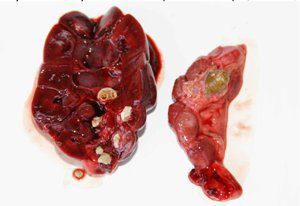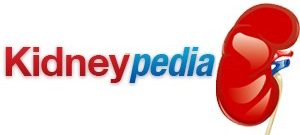
Renal calculi, more commonly known as kidney stones, are crystallized objects that are found in the fluid in the kidneys. The crystals are condensed from minerals found in urine. There are several types of urinary stone, and they may be located in various parts of the urinary tract; when the stone is located in the kidney itself, it’s called a kidney stone or a renal calculus. Another way of classifying stones is by the chemical composition. Some contain calcium, others are based on uric acid, and so on. In most cases, renal calculi pass from the system without complications, but when they are large enough to lodge in and obstruct the small vessels inside the kidney, they can cause problems ranging from severe pain to damage to the kidney itself to urinary obstruction.
Causes
The underlying cause of renal calculi is super-
The same thing can happen in the urine, except that a crystal forms naturally and spontaneously rather than being added to the urine. The crystal becomes a “seed crystal” that gathers more atoms and molecules of the mineral to it and forms a bigger crystal. Eventually it becomes big enough to present a health problem. The condition of supersaturation is dependent on both the amount of mineral dissolved in the urine and the amount of water in the body.
Size
How serious a kidney stone is depends largely on how big it gets. The smallest kidney stones pass through the system without even being noticed. The patient experiences no pain or other symptoms and there is no risk of damage. A stone that grows to be around three centimeters in diameter, however, can block a ureter –
Symptoms
The pain is known as “renal colic.” Other symptoms can also occur, including an urgently-
Diagnosis
Medical imaging and certain blood tests can confirm the existence of kidney stones when symptoms arise (kidney stones big enough to be a problem are rarely asymptomatic).
Treatment
The treatment depends on the severity of the condition. Pain management is almost always indicated, as well as monitoring the condition. Pain management usually consists of drugs such as opioids or anti-
Larger renal calculi require more active intervention to remove from the system. This consists of various levels of surgical intervention. The most commonly used such procedure is lithotripsy, particularly the type known as extracorporeal shock wave lithotripsy (ESWL). This employs a pulse of ultrasound to break big kidney stones into smaller fragments that can then be passed naturally through the system and out of the body with the urine.
Another type of lithotripsy is laser lithotripsy, which employs laser light channeled by a fiber-
Risk Factors
The most serious risk factors for renal calculi are found in the diet. Low fluid intake is a common culprit. So are a diet high in animal protein, sugars, and sodium. Grapefruit juice is also a risk factor for renal calculi. High calcium intake has also been implicated in kidney stones, although this generally must come from supplements rather than foods in order to be a problem. In fact, dietary calcium from foods may reduce kidney stone risk. This may relate to calcium’s function in helping to reduce the concentration of oxalate in the blood, which can prevent one type of kidney stone.
To prevent kidney stones, it’s best to keep all of these factors in mind. Simply drinking enough water will reduce the number one risk factor for developing renal calculi, as well as helping with a number of other health problems.
